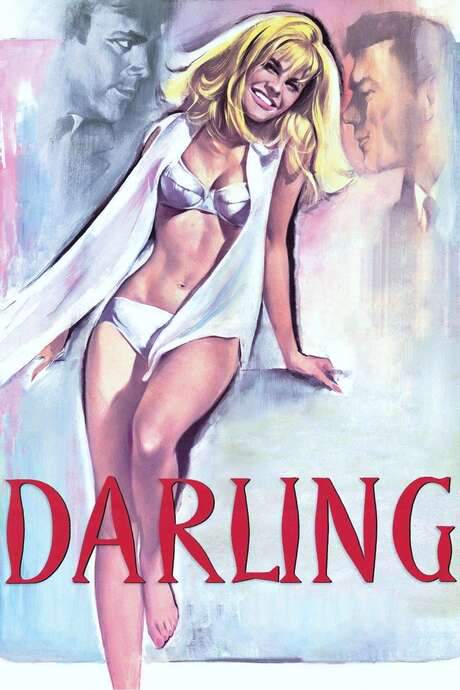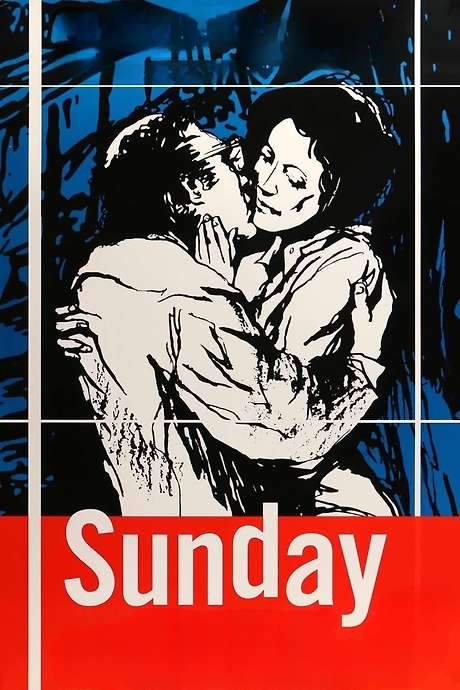
Sunday Bloody Sunday
Year: 1971
Runtime: 110 mins
Language: English
Director: John Schlesinger
Recently divorced career woman Alex Greville begins a romance with mod artist Bob Elkin, fully aware that Bob is also involved with middle‑aged doctor Daniel Hirsh. For both Alex and Daniel, Bob represents an escape from their repressive pasts, and despite the rivalry, neither is willing to give up youthful energy he brings to their lives.
Warning: spoilers below!
Haven’t seen Sunday Bloody Sunday yet? This summary contains major spoilers. Bookmark the page, watch the movie, and come back for the full breakdown. If you're ready, scroll on and relive the story!
Sunday Bloody Sunday (1971) – Full Plot Summary & Ending Explained
Read the complete plot breakdown of Sunday Bloody Sunday (1971), including all key story events, major twists, and the ending explained in detail. Discover what really happened—and what it all means.
Daniel Hirsh Peter Finch and Alex Greville Glenda Jackson are drawn into an open, unconventional love triangle with Bob Elkin Murray Head in a London that feels intimate and crowded at once. The three of them drift between affection and ambiguity, aware that Bob is seeing both of them while also staying in touch through mutual friends. Yet despite the risk of heartbreak, Daniel and Alex tolerate the arrangement because losing Bob feels worse than the complexity they share. Bob moves freely between them, a restless artist who values independence as much as companionship.
Their social world revolves around the Hodsons, a bohemian, academically minded middle-class family who live in a leafy London suburb. Alva Hodson Vivian Pickles and the rest of the Hodson clan host Sunday dinners that are warm and lively, yet infused with unspoken boundaries. The conversations hint at the trio’s secrets, and the children’s quick, quiet snickers reveal a youthful discomfort with adult entanglements. Alex’s work life adds another layer of tension: she counsels a depressed client who has recently fallen victim to age discrimination, a detail that mirrors the undercurrents of aging, power, and independence running through the film.
As the plot unfolds, the domestic surface is disturbed by a series of real-world frictions. Daniel and Alex sleep together in Alex’s flat; Bob’s arrival forces them to pretend they’re merely sharing a casual drink. In a candid moment, Bob articulates a strikingly liberal view of their bond: [they are, in his words, “free”]. This line encapsulates the ethos of the relationships around them, a world that prizes personal freedom over conventional permanence.
The story deepens with a string of stumbling blocks that test their loyalties. The Hodsons’ dog is tragically struck by a truck, a jarring accident that unsettles the family and punctures the illusion of safety in their comfortable suburb. Daniel wrestles with a former lover who has become a heroin addict; after trying—and failing—to fill a heroin prescription at a pharmacy because he cannot prove he is a doctor, his medical bag is stolen from his car. These incidents push the characters to confront fragility and the limits of help within a world that often refuses to fit neatly into tidy moral categories.
For Alex, the relationship is tied to growing doubts about her own professional life, a failed marriage, and a stifling childhood. For Daniel, it becomes a form of escape from the constraints of his Jewish upbringing, an attempt to redefine what personal happiness might look like beyond imposed identities. Both characters come to recognize the lack of lasting permanence in any of these connections, even as they cling to the meaningful pull they feel toward one another.
When Bob decides to leave the country for New York to pursue his own gallery, the narrative threads converge in a pointed, intimate confrontation. The moment is less about jealousy and more about the recognition that change is inevitable, and that the next chapter will require courage to move on. Bob’s departure marks a turning point for both Daniel and Alex, who simultaneously acknowledge that their arrangement has run its course and that their own paths must diverge.
The film closes with Daniel addressing the audience in a quiet, idiosyncratic monologue that reframes the entire story as a meditation on happiness, loneliness, and the peculiar truths of human connection. He muses on his relationship with Bob, the worries of his friends, and the stubborn, hopeful claim that happiness can exist even when it must be balanced against absence. The ending hinges on a small, almost clinical personal confession that underscores the bittersweet humor of the situation: I am happy, apart from missing him. And a final, laconic line that circles back to the everyday, almost clinical humor of the mortal condition: I only came about my cough.
Last Updated: October 09, 2025 at 12:40
Unlock the Full Story of Sunday Bloody Sunday
Don't stop at just watching — explore Sunday Bloody Sunday in full detail. From the complete plot summary and scene-by-scene timeline to character breakdowns, thematic analysis, and a deep dive into the ending — every page helps you truly understand what Sunday Bloody Sunday is all about. Plus, discover what's next after the movie.
Sunday Bloody Sunday Timeline
Track the full timeline of Sunday Bloody Sunday with every major event arranged chronologically. Perfect for decoding non-linear storytelling, flashbacks, or parallel narratives with a clear scene-by-scene breakdown.

Similar Movies to Sunday Bloody Sunday
Discover movies like Sunday Bloody Sunday that share similar genres, themes, and storytelling elements. Whether you’re drawn to the atmosphere, character arcs, or plot structure, these curated recommendations will help you explore more films you’ll love.
Explore More About Movie Sunday Bloody Sunday
Sunday Bloody Sunday (1971) Scene-by-Scene Movie Timeline
Sunday Bloody Sunday (1971) Movie Characters, Themes & Settings
Sunday Bloody Sunday (1971) Spoiler-Free Summary & Key Flow
Movies Like Sunday Bloody Sunday – Similar Titles You’ll Enjoy
Bob & Rose (1000) Film Overview & Timeline
Sunday Girl (2019) Movie Recap & Themes
The Line of Beauty (1000) Plot Summary & Ending Explained
Making Love (1982) Story Summary & Characters
Sunset Cemetery (2020) Ending Explained & Film Insights
Death on a Rainy Sunday (1986) Complete Plot Breakdown
A Sunday Affair (2023) Detailed Story Recap
Obsession (1000) Complete Plot Breakdown
Darling (1965) Detailed Story Recap
Sunday (1997) Complete Plot Breakdown
Saturday Night at the Baths (1975) Story Summary & Characters
Sundays and Cybele (1962) Spoiler-Packed Plot Recap
A Kind of Loving (1962) Detailed Story Recap
When Night Is Falling (1995) Movie Recap & Themes
It Always Rains on Sunday (1947) Complete Plot Breakdown

















